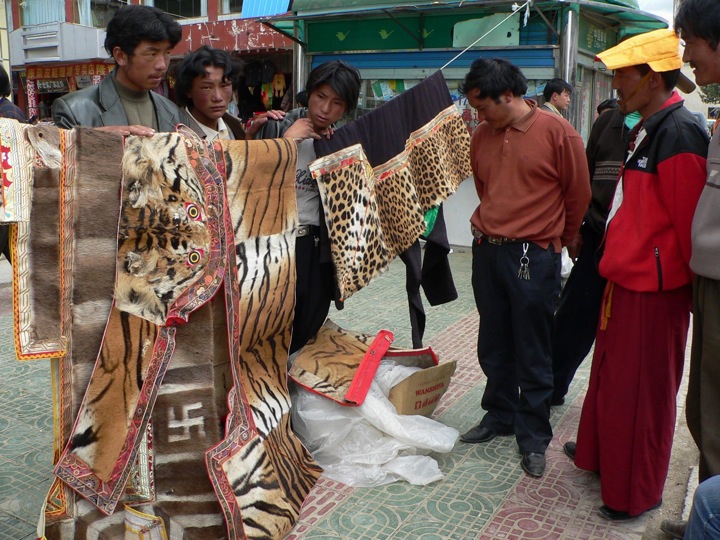That’s the message of a new report published by the Environmental Investigation Agency, which recently conducted undercover investigations into the illegal big cat skin and bone trade in China.
‘China has really run out of excuses. They tell us they are doing their best, but we have been warning them about this for years and there are still huge gaps in their enforcement effort. If they can put a man into space, they can do more to save the wild tiger’, said Debbie Banks, Lead Campaigner at the Environmental Investigation Agency.
The report comes just days before a high level summit in Kathmandu where delegations from tiger range countries, including India and China, will meet to thrash out a roadmap for Asian big cat conservation.
Sold as luxury items for home décor or clothing in Tibet and China, tiger skins fetch around US$11,660 – $21,860 each, while bones, which are used for traditional medicine, sell for $1,250 per kilo. Large amounts of money are involved in the trade, which is controlled by organised criminal networks.
Over the course of a three week investigation in July and August this year, EIA was offered 4 full tiger skins, 12 leopard skins, 11 snow leopard skins and 2 clouded leopard skins, along with dozens of pieces of skin, bones and skulls. At a horse festival in Tibet, a further 9 people were seen wearing tiger skins, and 25 wearing leopard skins, in full view of the local authorities.
Buying and selling Asian big cats parts and derivatives is illegal under Chinese law, and the international trade is outlawed under the Convention on International Trade in Endangered Species (CITES), of which China is a member. Most of the big cat skins sold in China are sourced from neighbouring countries such as India, Burma and Nepal.
‘There is some law enforcement in China, in a few regions, but there are whole swathes of the country where this trade is allowed to carry on with almost no fear of detection. A mixture of corruption and apathy is helping to decimate endangered species and is indicative of what is happening to the wider environment,’ said Alasdair Cameron of EIA.
Since 2004, the Environmental Investigation Agency has conducted yearly investigations into the Asian big cats skin and body part trade in China, and while the market has declined in some areas, this has largely been due to the collapse of demand amongst the majority of the Tibetan community, as opposed to efforts by the Chinese government.


 CI is a non-profit, non-commercial portal that aims to facilitate wildlife and nature conservation by providing reliable information and the tools needed to campaign effectively.
CI is a non-profit, non-commercial portal that aims to facilitate wildlife and nature conservation by providing reliable information and the tools needed to campaign effectively.